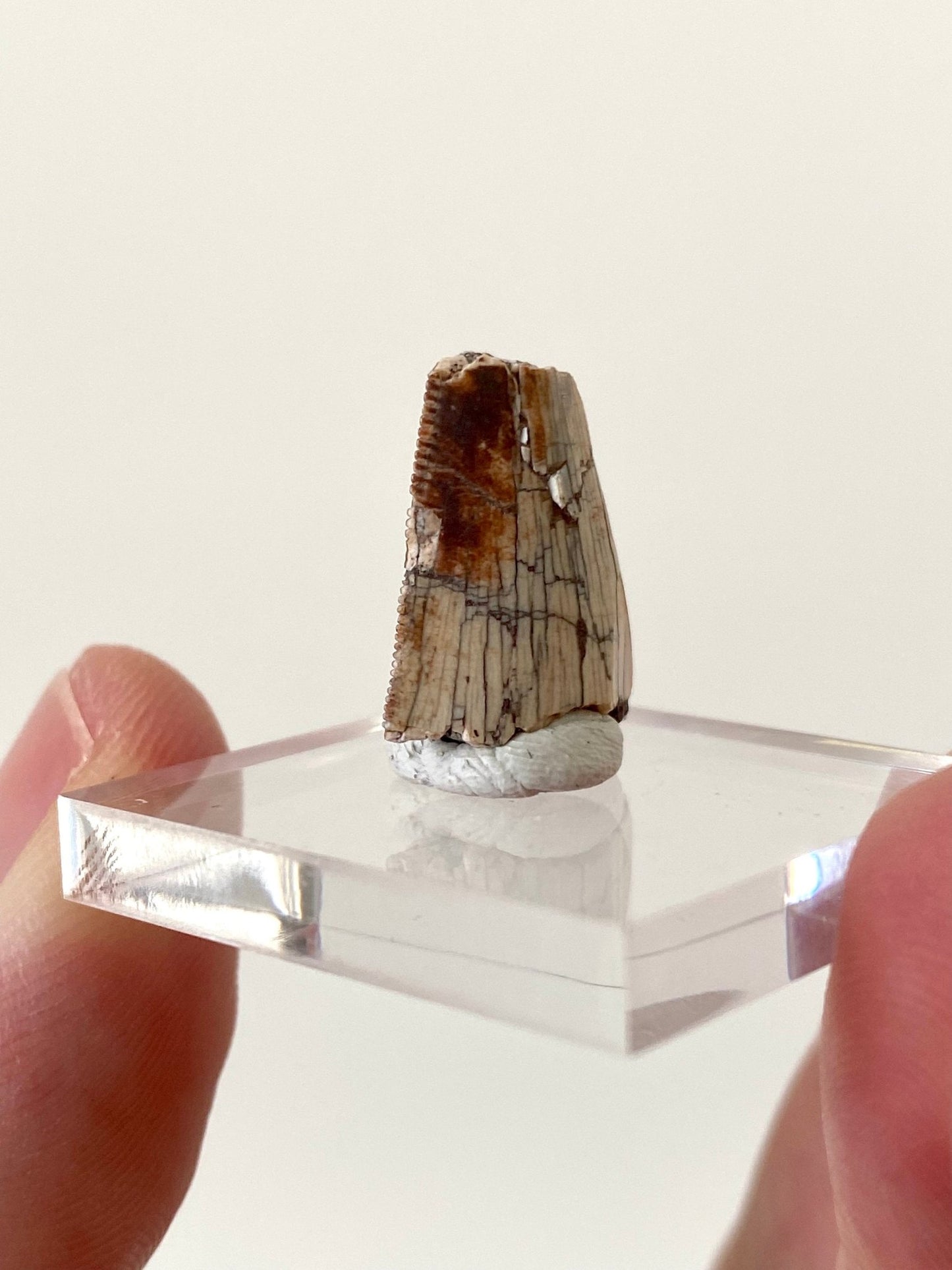NaN
/
of
-Infinity
Rare Dinosaur fossil tooth - Afrovenator abakensis, Megalosaurid (1.6cm)
Rare Dinosaur fossil tooth - Afrovenator abakensis, Megalosaurid (1.6cm)
Regular price
€75,00 EUR
Regular price
Sale price
€75,00 EUR
Unit price
/
per
Tax included.
Shipping calculated at checkout.
Couldn't load pickup availability
Shipping rates & times
Shipping rates & times
| Destination | # days** | Rate |
| USA | 5 - 7 | $25 |
| Mainland Europe | 3 - 5 | €12,95 |
| Non-EU Europe | 5 - 7 | €14,95 |
| Domestic | 1 - 2 | €6,95 |
| Other* | 15 - 20 | €23,95 - €45 |
* Please note a few countries are currently not available for shipping
** Average number of business days in transit
Dinosaur fossil tooth - Afrovenator abakensis (Megalosaurid)
Including plexiglas base plate.
Location: Tiouraren Hill, Téneré Desert, Niger.
Age: Middle Jurassic, 167 million years
DESCRIPTION: The megalosaurid theropod dinosaur genus Afrovenator, also known as the "African hunter," lived in northern Africa during the Middle Jurassic Period. In the Nigeran department of Agadez, the Tiourarén Formation is where the bones of Afrovenator were first found in 1993.
The layers of the Agadez Region of Niger's Tiouraren Formation were once regarded as belonging to the Early Cretaceous. Reinterpreting the sediments, however, revealed that they are most likely Middle Jurassic (Bathonian) in age. It is the Irhazer Group's topmost unit. Among the fossils that have been extracted from the formation are dinosaur remains.
Mudstones that are reddish and nearly solid make up the formation. In braided river systems, the depositional environment has been described as swampy with seasonal floods.
Size: 1.6cm
View full details
Including plexiglas base plate.
Location: Tiouraren Hill, Téneré Desert, Niger.
Age: Middle Jurassic, 167 million years
DESCRIPTION: The megalosaurid theropod dinosaur genus Afrovenator, also known as the "African hunter," lived in northern Africa during the Middle Jurassic Period. In the Nigeran department of Agadez, the Tiourarén Formation is where the bones of Afrovenator were first found in 1993.
The layers of the Agadez Region of Niger's Tiouraren Formation were once regarded as belonging to the Early Cretaceous. Reinterpreting the sediments, however, revealed that they are most likely Middle Jurassic (Bathonian) in age. It is the Irhazer Group's topmost unit. Among the fossils that have been extracted from the formation are dinosaur remains.
Mudstones that are reddish and nearly solid make up the formation. In braided river systems, the depositional environment has been described as swampy with seasonal floods.
Size: 1.6cm








